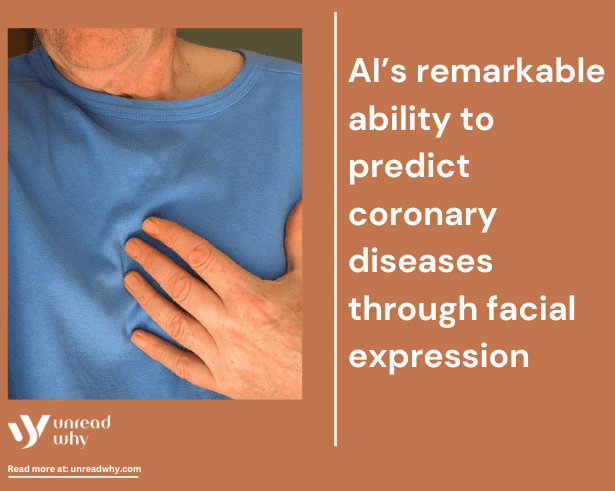Facial expression and coronary diseases
Do you even think that your facial expression can predict the risk of coronary disease in you? Well, now it is possible enough with the help of artificial intelligence (AI). As we all know, AI is bringing revolution in the healthcare sector to enhance diagnostic accuracy, personalised treatment plans, and predict potential health issues before their critical condition. Nowadays, microplastics have been found in human blood which is causing different coronary diseases unknowingly, and in this critical condition, AI can help by detecting early signs of these diseases through the facial expression.
The concept of thermal imaging
Before proceeding with the research study, it is essential to understand the concept of thermal imaging, and how the combination of AI can help to predict coronary diseases. A non-invasive and sophisticated technique through which infrared radiation is captured and visualised emitted from various objectives is called thermal imaging. Modern technologies like the Internet of Things (IoT) and machine learning (ML) technologies can pull out, process and integrate complex information from thermal imaging to enhance real-time monitoring of facial expressions and enable proactive healthcare interventions regarding coronary diseases.
What do researchers say?
A recent study published in the BMJ Health & Care Informatics, revealed that the combination of AI and facial thermal imaging can accurately predict the chance of coronary diseases like coronary arrest. Well, coronary arrest, which is also known as cardiac arrest, refers to that kind of critical condition when the heart suddenly stops beating. However, the researchers highlighted that rather than using conventional methods like blood tests, cardiac catheterization and others, this real-time, non-invasive method is more effective in providing early detection through facial expression and continuous monitoring to improve patient outcomes.
The study was conducted between September 6, 2021, to February 10, 2023, where 460 eligible participants were chosen to complete the research. All the participants were guided to capture their thermal images by using interactive response technology (IRT). All 460 participants need to have at least one high-quality IRT image for the final dataset analysis. The average age of all the participants was 58.4 years. Significantly, 27.4% (126 in-person) participants were women, and the rest were men.
The results the researchers got were surprising. Among 460 participants, 322 were diagnosed with coronary artery disease (CAD). The diagnosed participants were older, and most of them were male. These participants have a risk-prone lifestyle, like having the habit of smoking, and have diseases like diabetes, high blood pressure, high cholesterol and many more.
Should we worried about the results?
Yes, of course. Especially men need to be worried most. In men, the habits of smoking and drinking have been found most, for which metabolic syndromes like blood sugar, cholesterol, and too much weight have been noted, which ultimately lead to coronary diseases including coronary arrest, heart attacks, strokes and so on.
However, there is a hope to avoid CAD with the help of AI and the integration of thermal imaging in it. We are entering a modern era where technology will be our friends. AI can empower us to proactively handle coronary diseases and improve our quality of life.
FAQ
What is coronary arrest?
Well coronary arrest, which is also known as cardiac arrest, refers to that kind of critical condition when the heart suddenly stops beating.
Why do men have a higher chance of coronary arrest than women?
In men, the habits of smoking and drinking have been found most, for which metabolic syndromes like blood sugar, cholesterol, and too much weight have been noted, which ultimately lead to coronary diseases including coronary arrest, heart attacks, strokes and so on.
What is thermal imaging?
A non-invasive and sophisticated technique through which infrared radiation is captured and visualised emitted from various objectives is called thermal imaging.
What does the recent study of BMJ reveal about coronary disease detection?
A recent study published in the BMJ Health & Care Informatics revealed that the combination of AI and facial thermal imaging can accurately predict the chance of coronary diseases like coronary arrest.
How can thermal imaging help to predict coronary diseases?
Modern technologies like the Internet of Things (IoT) and machine learning (ML) technologies can pull out, process and integrate complex information from thermal imaging to enhance real-time monitoring of facial expressions and enable proactive healthcare interventions regarding coronary arrest.


